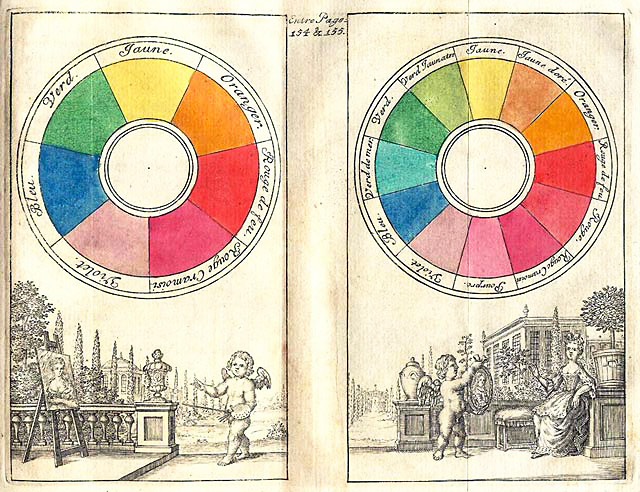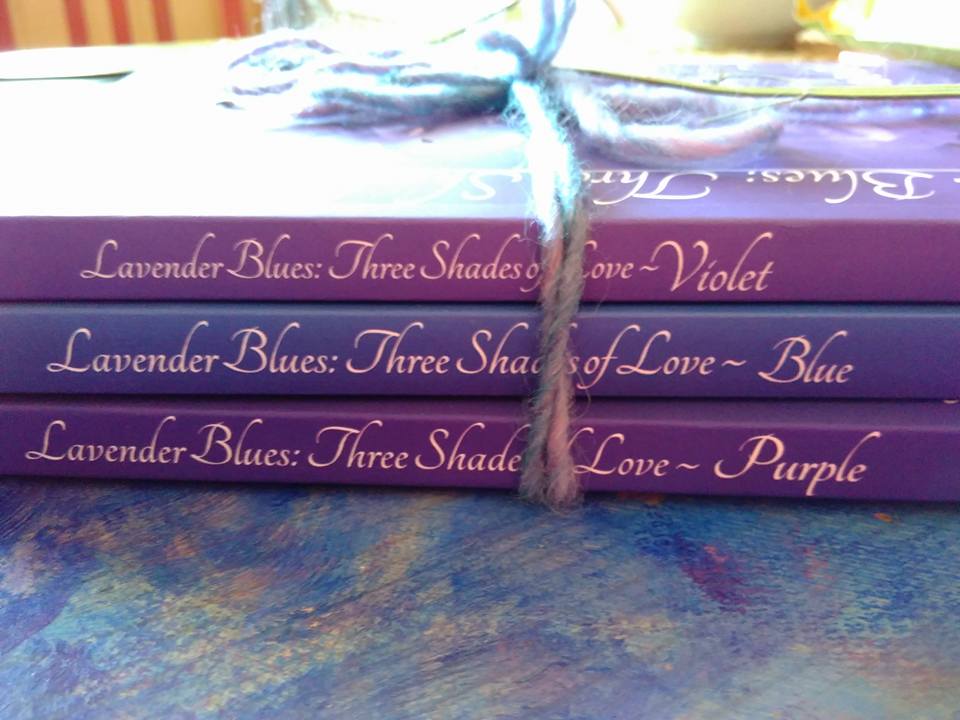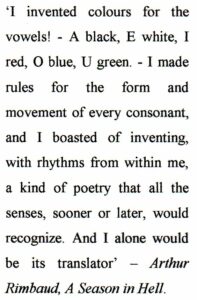
JANE BURN – POETRY AS HARD GRAFT, INSPIRATION, REACTION OR EXPERIMENT?
I interviewed poet & artist Jane Burn who won the Michael Marks Environmental Poet of the Year 2023-24 with A Thousand Miles from the Sea.


 As an author, I know that words are never neutral. They all have their colours. I also know that when you name colours in a story, they stand out. So some characters can be identified by their hair colour or eye colour or a piece of coloured clothing whenever they appear.
As an author, I know that words are never neutral. They all have their colours. I also know that when you name colours in a story, they stand out. So some characters can be identified by their hair colour or eye colour or a piece of coloured clothing whenever they appear.
Colours give a book energy. They have speed while words have mass. But working with them is similar. Both require attention to detail, careful placing, and may need thinning out or thickening in places.
So I use them and edit them and switch them around – and sometimes when I reread my work I feel that a passage or whole chapter is colour-coded.
Challenger in the Head: Hold on. What do you mean by that?
Author self: I mean a mood or tone that holds the scene together. A bit like a colour-field painting or pixels on a screen made up of words.
Challenger: I see. So does the same thing apply to the titles of your books?
Author: Absolutely. So each of my novels has a colour title – ‘Purple’, ‘Blue and ‘Violet’ – chosen by feel and intended to connect with the life stage they deal with. There is an anomaly, however. I only realised after naming them that the order of the titles (Purple, Blue, Violet) doesn’t match the sequence of the traditional Red/Yellow/Blue colour wheel.

Challenger: Does that matter? Couldn’t you just swop around titles?
Author: I don’t think so.
Challenger: Why?
Author: Because the life stages dealt with– 1. Youth 2. Maturity 3. Old Age – correspond to the order of the books: 1. ‘Purple’ 2. ‘Blue’ 3..‘Violet’. Swopping around titles to fit the colour wheel would break those links.
Challenger: Links? Titles? Tell me more.
Author: Well, taking them in order of publication…
In:
Challenger: So, did these colours change as you wrote your books?
Author: Oh yes. In fact, I came to think of each book as a colour-mix.
 Challenger: And what about Lavender? Where does that fit?
Challenger: And what about Lavender? Where does that fit?
Author: It fits in two ways.
Challenger: That so? Then show us how you write with colours – for real, an example.
Author: I’ll give you two. The first one, taken from ‘Violet’, comes from my protagonist Beth’s diary:
Of course morphine helps. At first I was afraid, but the doctors reassured me. And once I’d tried I understood its calm. Morphine is a lake; its deep blue spring spreads underground. It’s the blue of gentians and violets and Lawrence’s last poems. And that’s the blue, when I swim in it, that I feel when I pray.
The second is a dream-dialogue from earlier in ‘Violet’.
“What’s your favourite colour?” asked James. Beth was back in the Desert Island Dream. After three hours' sleep and a full day working in the café, she’d left early, intending to write. Her excitement had carried her until she reached the sofa but then she’d nodded off. In her dream she was warm. The studio was comfortable and softly-cushioned. Images rose up of flesh in water. She could have been floating in a fish tank. The show was live. Its theme was relationships, and how pleasure and survival were linked. They’d talked about interests shared and now, with James as the presenter, they were discussing likes. “What’s yours?” she said quietly, inviting his gaze. “Any colour?” “Your fave.” “Pink.” “Pink?” “The colour of your top.” “Any others?” “Red.” “Like my lipstick?” “Yes, mine as well.” “On your glass?” “…on my collar…” Beth’s face was glowing, “Mine’s blue-grey.” “Eyes?” “Sea, skies, as well.” “Anything else?” “Hopkins.” “Hopkins?” “Like Pied Beauty.” “Mixtures, combinations.” “Clashes as well.” “But what about blues?” Beth’s gaze softened, she was giving him the look. “Music, you mean?” “Oh yes…yes…yes.” “They’re sad.” “Very.” “You often feel sad?” “Sometimes, when I’m alone.” “So what do you do?" “Play music, or sing.” “You sing?” “Singalong, bathroom stuff.” “I think I’d like that.” “O Sole Mio, that sort of thing?” “If that’s what you sing.” “Or Straight from your heart, perhaps?” “Ah, I love those lyrics.” “Keep us so near while apart...” “Yes… I’m not alone in the night…” “Is that your favourite song?” Beth coloured as she shook her head, “Blue Moon.” James said a few words, wrapping up the programme. He switched off the microphone and let out a breath. Beth was watching him carefully, “So who do you sing to?” “The girl of my dreams.”
ABOUT LESLIE TATE’S BOOKS:

I interviewed poet & artist Jane Burn who won the Michael Marks Environmental Poet of the Year 2023-24 with A Thousand Miles from the Sea.

I interviewed ex-broadcaster and poet Polly Oliver about oral and visual poetry, her compositional methods, and learning the Welsh language. Polly says, “I absolutely love

I interviewed Jo Howell who says about herself: “I’ve been a professional photographic artist since I left Uni in 2009. I am a cyanotype specialist.


Poet Tracey Rhys, writer of Teaching a Bird to Sing and winner of the Poetry Archive’s video competition reviews Ways To Be Equally Human. Tracey,
| Cookie | Duration | Description |
|---|---|---|
| cookielawinfo-checkbox-analytics | 11 months | This cookie is set by GDPR Cookie Consent plugin. The cookie is used to store the user consent for the cookies in the category "Analytics". |
| cookielawinfo-checkbox-functional | 11 months | The cookie is set by GDPR cookie consent to record the user consent for the cookies in the category "Functional". |
| cookielawinfo-checkbox-necessary | 11 months | This cookie is set by GDPR Cookie Consent plugin. The cookies is used to store the user consent for the cookies in the category "Necessary". |
| cookielawinfo-checkbox-others | 11 months | This cookie is set by GDPR Cookie Consent plugin. The cookie is used to store the user consent for the cookies in the category "Other. |
| cookielawinfo-checkbox-performance | 11 months | This cookie is set by GDPR Cookie Consent plugin. The cookie is used to store the user consent for the cookies in the category "Performance". |
| viewed_cookie_policy | 11 months | The cookie is set by the GDPR Cookie Consent plugin and is used to store whether or not user has consented to the use of cookies. It does not store any personal data. |
8 responses
I love this. This is so fascinating!
Thanks, Marjorie! 🙂 🙂 🙂
I love colours… when so much of the world is black and white, it is great to see the other shades given equal billing.. x
Yes, and it’s the secondary and tertiary colours that can create the complex mixed meanings. Hard to handle but worthwhile! x
Fascinating insight, again!
🙂 🙂 🙂 🙂 🙂
Brilliant! I love your use of color to represent the passage of time and age. Very cool. <3
Ah yes, life as a rainbow. Richard Of York Gave Battle In Vain. Thank you, Colleen!